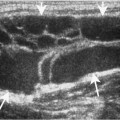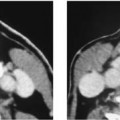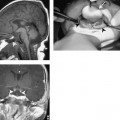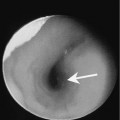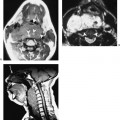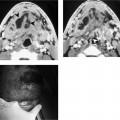Chapter 180 The “facial” nodes belong to one of the most inconsistently demonstrated groups of nodes. Most of the afferent drainage of these nodes is from the skin and mucous membranes of the face. The efferent drainage is via the submandibular nodes. The facial nodes are usually divided into five groups: mandibular, buccinator, infraorbital, malar, and retrozygomatic nodes (Fig. 180–1). The buccinator nodes are located in the buccal space. Lymphoma and metastatic lymphadenopathy affect these nodes infrequently. A review of the literature showed 44 cases, of which imaging studies were available in 25. Buccal space lymphadenopathy presents as a mass in the cheek. The primary lesion is usually already evident. The reported primary malignancies include squamous cell or adenocarcinoma of the maxillary sinus, tongue, lip, buccal mucosa, preauricular skin, salivary glands, retromolar trigone, and nasopharynx. Metastases to facial lymph nodes from squamous cell carcinoma usually occur in patients with multiple recurrences (Figs. 180–2 through 180–4). The prognosis tends to be poor because this represents metastases from dermal lymphatic metastases. Lymphomas also form a major group responsible for facial lymphadenopathy. Others include metastatic disease from ocular melanoma and distant sites such as bladder carcinoma.
(Buccinator) Lymph Nodes
Epidemiology
Clinical Findings
Pathology
Treatment
Stay updated, free articles. Join our Telegram channel

Full access? Get Clinical Tree


